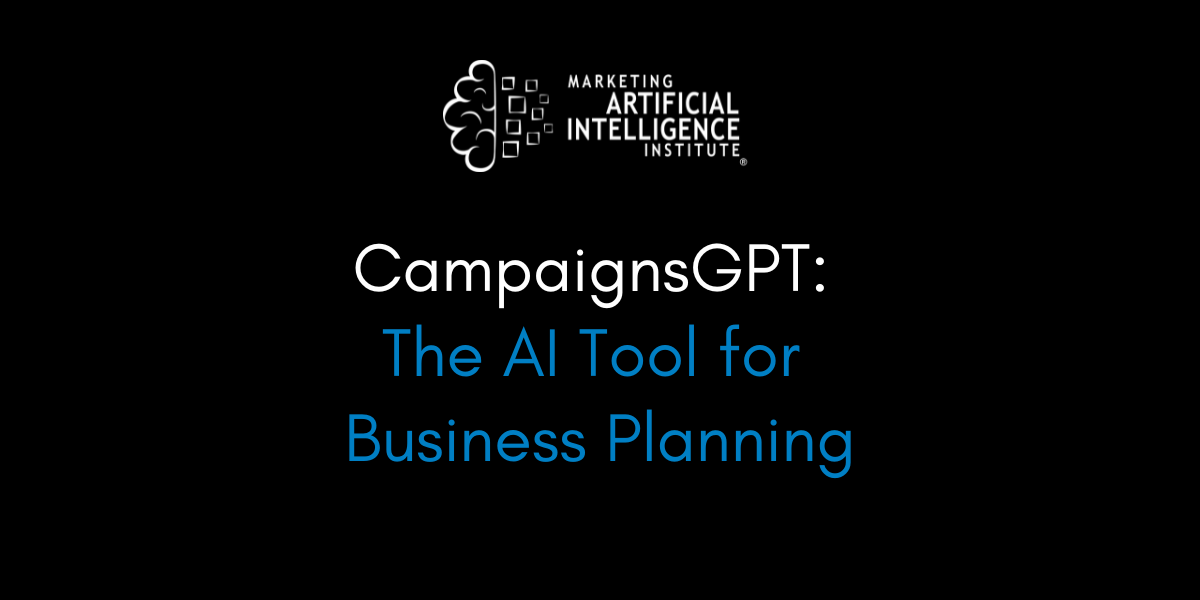Meet CampaignsGPT, a ChatGPT-powered tool designed to break down different types of business campaigns into tasks and subtasks, then assess each one's exposure to AI.
The tool was created by Marketing AI Institute founder and CEO Paul Roetzer, through his new SmarterX.ai AI research and consulting firm.
With CampaignsGPT, you just enter a campaign you want to assess (e.g., product launch, lead generation, change management), then the tool breaks it down into tasks and subtasks. Then, it labels each task and subtask according to its exposure to AI.
In this context, exposure means the ability of a large language model to reduce the time it takes to complete tasks with equivalent or greater quality than an average skilled professional.
And it's not just for marketing. This versatile tool can be used across business units, including sales, service, HR, and finance.
The tool is completely free—and you can use it right now to level up your business and work.
I found out how from Roetzer on Episode 112 of The Artificial Intelligence Show.
Why CampaignsGPT?
Roetzer walked me through the origins of the tool.
"When we teach AI adoption in enterprises, we teach people that if you want to get value out of ChatGPT, Gemini, Claude, or other large language models, one of the best ways is to look at what you already do and find ways to infuse AI into those processes,” he says.
CampaignsGPT is designed to make that process much easier.
For practitioners, it identifies and automates use cases, helping you find tasks AI can assist with.
And for business leaders, it aids in analyzing campaign planning and execution, projecting how AI models will affect staff, strategies, budgets, and timelines in the next 1-2 years.
The Power of Campaign Thinking
Roetzer emphasizes that while campaigns are often associated with marketing, the concept applies broadly across business functions.
In sales, you might run business development, customer referral, or market expansion campaigns. In HR, you might run employee onboarding or talent acquisition campaigns. And so on, in every area of business.
"These are all campaigns," Roetzer notes. "They're collections of tasks designed to achieve a goal."
How to Use CampaignsGPT
The tool offers three conversation starters:
- Enter a campaign type to assess
- Provide a campaign with tasks to assess (upload or paste your own)
- Show an example assessment
Roetzer advises users to think of CampaignsGPT as a planning assistant. "Don't just stop at a single assessment or output," he suggests. "Have a conversation with it. Ask it to break into subtasks or help you prioritize which ones to focus on."
Try Out CampaignsGPT Now
While CampaignsGPT is powerful, it's important to note its current limitations. As Roetzer points out, today's AI models are primarily capable of text inputs and outputs, with some image capabilities. They don't yet have advanced reasoning or highly persuasive capabilities.
However, the tool's "exposure key" looks ahead to how developing AI abilities will impact campaigns and jobs in the future. This forward-thinking approach makes CampaignsGPT not just a planning tool for today, but a window into the future of work.
You can access CampaignsGPT for free at SmarterX.ai. As with any AI tool, remember that it's not perfect and may occasionally make mistakes. But as a research and planning tool, it offers immense value in accelerating AI adoption and helping businesses prepare for an AI-augmented future.
Mike Kaput
As Chief Content Officer, Mike Kaput uses content marketing, marketing strategy, and marketing technology to grow and scale traffic, leads, and revenue for Marketing AI Institute. Mike is the co-author of Marketing Artificial Intelligence: AI, Marketing and the Future of Business (Matt Holt Books, 2022). See Mike's full bio.




